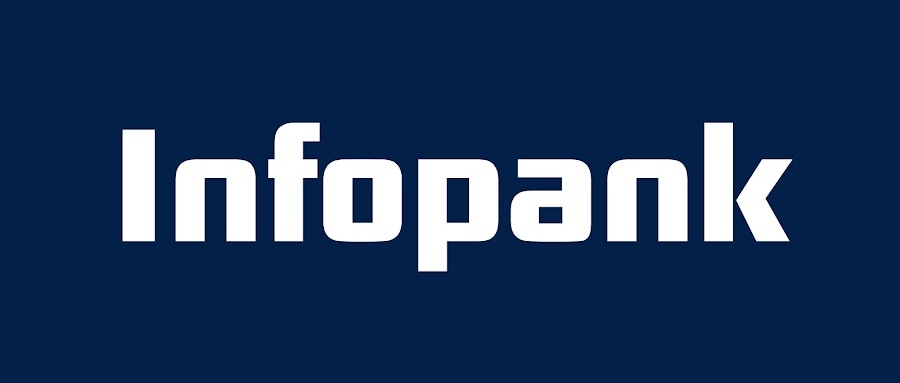How to Make a WordPress Website: The Design Dilemma
Safe to say – today, WordPress is the number one website platform. It powers 31% of the entire Internet. It is by far the most popular content management system, with 70% of the world’s websites running on WordPress. It has over twice as many users as its top 10 rivals combined. That is what the…


Safe to say – today, WordPress is the number one website platform. It powers 31% of the entire Internet. It is by far the most popular content management system, with 70% of the world’s websites running on WordPress. It has over twice as many users as its top 10 rivals combined. That is what the latest stats from OpenSourceCMS reveal. Interestingly, this number still grows very rapidly. And just keeps growing, at a speed like one hundred was not a limit.
WordPress did not start out successful. At least not in terms of commercial popularity. A platform initially released for blogging and once battling with Blogger and Tumblr over market share, has evolved to a powerful engine. It is a forceful tool for developing corporate sites, eCommerce solutions, complex intranet systems and what not. CNN, Forbes and Spotify have moved to WordPress quite recently, but did you know that most NASA websites are powered by WordPress for nearly 10 years? In fact, their research centre now encourages all organisations to run their web on it. After all, roughly half of the world is not powered by WP. Yet.
The rise of WordPress can be mind-blowing, but world domination is not the reason we love it. What makes it truly special is that it requires minimum fuss. The very same ease of use as back in the old days. With literally a million themes and plugins available, there is one question that arises all the time. A design dilemma at the core – should a business get a tailor-made WP site, or is a stock theme perfectly sufficient? Obviously, there are pros and cons, and some arguments can end up being a show-stopper for your business. The WordPress web designers at Opus have compiled this guide to help you figure out which path to take.
Stock design themes
The total number of available WordPress design themes is believed to be in six digits. Around 10,000 of them are usable and compatible today. The stock themes can be set up quickly and are relatively cheap, with prices often below $100. It is rather simple to customise one to match your branding. With some knowledge and experience with managing a website and using graphic programs such as Photoshop (basic knowledge is sufficient), you can setup a site on your own without the help from a developer. This is a big benefit in case of a limited budget and not too demanding about the design.

Where to find one?
The most popular place for buying and selling is Themeforest, with over 7,000 themes from hundreds of different authors. Themeforest is part of the Envato Marketplace providing various stock assets such as fonts, graphics, video templates and so on. The themes are divided into categories which helps to narrow the choice down.
A stock theme bought from Themeforest comes with free updates and 6 months of technical support from the author. The latter can be extended for a small cost. For those who find during the set up process that technical knowledge lacks to finish it, can use the help of Envato Studio to express install the theme.
While Themeforest is the most popular for stock themes, it might be worth to consider an alternative as well.
For example:
Butterflies vs Dinosaurs

Creating and then selling a premium theme is considered a nice source of passive income among freelancers. In fact, in case of a theme marketplace there is often a team of freelance developers or an agency that releases a new theme every once in a while. Some of the most famous multipurpose themes have become a brand of their own. Creating a theme can take up to 1,000 hours of development in case of a multipurpose theme or framework with loads of plugins and tons of features to meet every need one can think of. Unlike stock photos and graphics the work does not stop after uploading the theme to a marketplace. A theme requires constant updates, possible bug fixes, client support, new features and so on. This can be rather time consuming for the theme’s author.
A widely used strategy among the sellers of premium themes is to develop a rather simple, niche theme with not too many options for customisation, features and variations, set it up for sales and remove it when its popularity drops below a certain level. The lifespan of such theme can be anywhere between 3 months to couple of years from the day they arrived the market. In either way the buyer may find himself in a situation where he bought a theme and it has been removed from the sale even before he managed to set his own site up. Leaving the overall disappointment aside, for the buyer this often means a risk that the site stops working after the next update of the WordPress engine or any third party plugin such as Woocommerce. Rather likely that they will not have any updates for their theme.
To lower the risk of such situation taking place it is wise to do some background check of both the seller and the chosen theme. If the seller has been on the market for years but the other themes from the same seller have all been uploaded just recently or there is just one brand new theme in his portfolio, highly likely that his themes are not going to stay available for long. There are two dates that are important when evaluating a theme – date of release and date of last updated. A good theme with a strong client support gets updated rather frequently and this is also reflected in their reviews.
If in doubt, it might be a good idea to write the author in person and ask how long he plans to keep the theme on the market and being updated. When browsing the themes, it is wise to check some top figures, such as sort them by the number of sales. Those on the top are so-called dinosaurs of WordPress stock themes. Having been on the market for years, they have become a brand on their own. Often with a huge amount of loyal clients who are their greatest value to preserve market share.
To name a few:
- Avada by Themefusion
- Theme X by Themeco
- Udesign by AndonDesign
- Enfold by Kriesi
- Bridge by Qode
- Salient by Themenectar
- BeTheme by MuffinGroup
All these are built as multipurpose themes that can be customised for different purposes and topics. They support multilanguage sites, eCommerce solutions using Woocommerce, social platforms such as BuddyPress, complicated content sliders, forms etc. Most come with over 10 (some even 100) demos that can be installed as a starting point with just one click.
The downsides of a premium theme
While it definitely sounds attractive to get all those features and updates for less than 100 bucks, it comes with its downsides. Firstly – do I really need all this? To set up a simple one page introduction, should the solution really support Woocommerce and have hundreds of layout templates? The multipurpose megathemes when put to real use will always be dragging along excess bloat of CSS, template rendering logic, as well as such JavaScript that the actual site never needs. One might think: “But it came for free, let it be there just in case we might need it one day”. The reality is that all that excess has a great influence on the site’s performance and this is not where you want to make a compromise. A good WordPress website design is built to include only the necessary. When browsing different demos, the simplest demo is the best one to test that. For example, does it include the styling for the eCommerce even when there is no shop on the site?
Stock themes are meant as quick and easy solutions to get a site up and running. While a reasonable choice when keeping branding and customisation at minimum, the time and effort grow exponentially when the default is not enough and customisation requirements are far beyond minimal. It is not rare that at some point the time spent on customising a stock theme can be compared to the time it would have taken to craft one from scratch. In these cases the end result with the premium theme will often be a compromise between needs and available options.
Sites built with stock themes tend to look and feel rather generic and lack the personality. While there are some experimental, and some really unique themes on the market that stand out from the rest, they are still created to match the average needs of average Joe. It does make perfect sense though. It hardly is reasonable for the theme’s author to create a theme not reflecting the taste of an average client. An author of a stock design rarely aims anything else than getting as many themes sold as they possibly can.
Tailor-made design themes
A tailor-made WordPress theme crafted and optimised for one particular project works best for clients with somewhat flexible budget and timeline. Also, for those that have rather specific requirements when it comes to branding and the overall design. Not to even mention the technical features. If you are demanding in terms of user experience as well as functionalities, then a custom WordPress website design is the only way to go really.
The design theme dilemma can also be a question of prestige. A premium theme from a stock marketplace is always a cheaper solution compared to a tailor-made one. “Cheap” is the word many companies wouldn’t want to have associated with their brand though. No matter how much the premium theme has been customised, it still might be used by thousands of other businesses around the world. The resemblance will be there.
Creation of a tailor-made WP theme starts like any other development
- Analysis
- Prototyping
- Design revisions
In these steps it is all about the client’s requirements, whether purely technical or design related. The custom theme is hand-crafted to meet each and every requirement. A stock theme can be a close match to those requirements at best, but rarely a perfect one (in fact often far from it). A custom theme gives the designer freedom to be creative, include more innovation into the design and bring the brand incorporation a step further from just colours and typography. It gives the opportunity to craft a site that reflects the atmosphere of the business and its values online. To the highest precision.
Another everlasting issue with stock themes is they contain an immense amount of unnecessary features. Never a case with a tailor-made WordPress theme, at least not when an experienced web designer creates it. Being in control of the whole website design and technical solution means everything can be optimised for the maximum performance. Not just the speed, it also applies to the user experience and sales performance once live. Whether on the site, or with the help of it, the goal of a business website is likely to thrive revenue, increase conversion, attract new users as well as have more returning loyal customers.
Relationship between a client and the developer of the website design is more personal than settling with a stock theme. Thus allows proper client support, new features that are reliable, updating the theme to be compatible with both the latest WordPress core and all of its plugins. Way more flexible, and less risky than it would be with a stock theme. In fact, increasingly the security risks involved with a cheap solution is a huge problem. That threat might transform into a serious issue within just months after the launch.
To conclude it all

PROS OF STOCK THEMES
- Large variety to choose from
- Cheap
- Easy to set up
- Often can be done without any help from developer
CONS OF STOCK THEMES
- Risk of losing client support and updates
- Same theme used by hundreds, or even thousands of other businesses
- Contains many unnecessary features that affect site performance
- Limited customisation, much easier to build a new one if in-depth customisation is needed
- Design is often generic and does not stand out from the competition
- The website may look cheap
- Compatibility issues with other plugins
- Unless going for a theme that is used by thousands of others, the theme often comes with security risks
PROS OF TAILORED THEMES
- Client support is personal
- Updating the site, along with WP core engine is easier
- Adding new features and functionalities is way more easier
- Compatibility issues quickly fixed by developer
- Website meets all requirements to highest precision
- More potential to stand out from the rest and be unique
- The site does not include unnecessary bloat
- Warranty from a developer (every solid design/dev agency offers it by default)

CONS OF TAILORED THEMES
- All hand-crafted from zero, hence requires more time
- Less likely to get a free trial from developer
- More expensive
Considering all above, in most cases a tailor-made theme is imperative. Provided your budget allows. A stock theme is considered an easy solution to get something up fast and cheap. Hence, a solid alternative if you are short on resources. You can always start your business with a stock theme and redesign it in the future when the business has sufficient resources. Changing things later on is often a pain, but it can be a gain if your business loses money every day by not being online.
Whether you find the setup too time consuming, or struggle to find a solid theme, the designers at Opus can help you out. Feel free to contact the team anytime and tell our design gurus what you need. An experienced WordPress designer can easily make your business stand out from the competition and craft something unique. Of course, warranty period is always included by default, even for a simple WordPress website.
Get in touch
We have your back when it comes to web development, giving you the freedom to focus on building and growing your company.

More posts
-
 Faster and More Flexible: Infopank Gets a Cost-Effective, High-Tech MakeoverÄripäev’s Infopank is a critical tool for many entrepreneurs, offering in-depth financial data and business relationship insights. However, the platform was in need of a refresh: it was difficult to use on mobile devices and suffered from slow loading times. Thanks to a collaboration between Uptime and Opus, a brand-new version of Infopank has been […]Read more
Faster and More Flexible: Infopank Gets a Cost-Effective, High-Tech MakeoverÄripäev’s Infopank is a critical tool for many entrepreneurs, offering in-depth financial data and business relationship insights. However, the platform was in need of a refresh: it was difficult to use on mobile devices and suffered from slow loading times. Thanks to a collaboration between Uptime and Opus, a brand-new version of Infopank has been […]Read more -
 Andbeauty e-commerce platformOverview for building an Andbeauty e-business from ground up. We provide an overview of the planning, development and after support. Added customer feedback.Read more
Andbeauty e-commerce platformOverview for building an Andbeauty e-business from ground up. We provide an overview of the planning, development and after support. Added customer feedback.Read more -
 Accessible E-commerce In 2025Accessible e-shop the key to successful e-commerce. Improve the experience to all users, help search engines and follow the WCAG standards mandatory from 2025.Read more
Accessible E-commerce In 2025Accessible e-shop the key to successful e-commerce. Improve the experience to all users, help search engines and follow the WCAG standards mandatory from 2025.Read more
